Abstract
This study focused on the natural crown gall infections occurring in a Leuce poplar nursery. Soil effects on crown gall frequency were detected, indicating that contamination was due to a resident Agrobacterium tumefaciens population, which was present before seedling plantation. The crown gall frequency on poplar progenies varied from 3 to 67%, indicating the feasibility of improvement in crown gall resistance. Of 129 tumor isolates, 128 were pathogenic. These isolates were of biotype 1 or 2. Biochemical, serological, and antibiotic resistance typing results concurred, indicating the presence of four biotype 1 and two biotype 2 resident subpopulations. No significant change was noticed in the relative proportions of subpopulations from one year to another. Pathogenic subpopulations both in vitro and in planta were susceptible to Kerr K84 (P. B. New and A. Kerr, J. Appl. Bacteriol. 90:172-179, 1972). In addition, no serological cross-reactions were found to occur between K84 and the pathogenic subpopulations.
Full text
PDF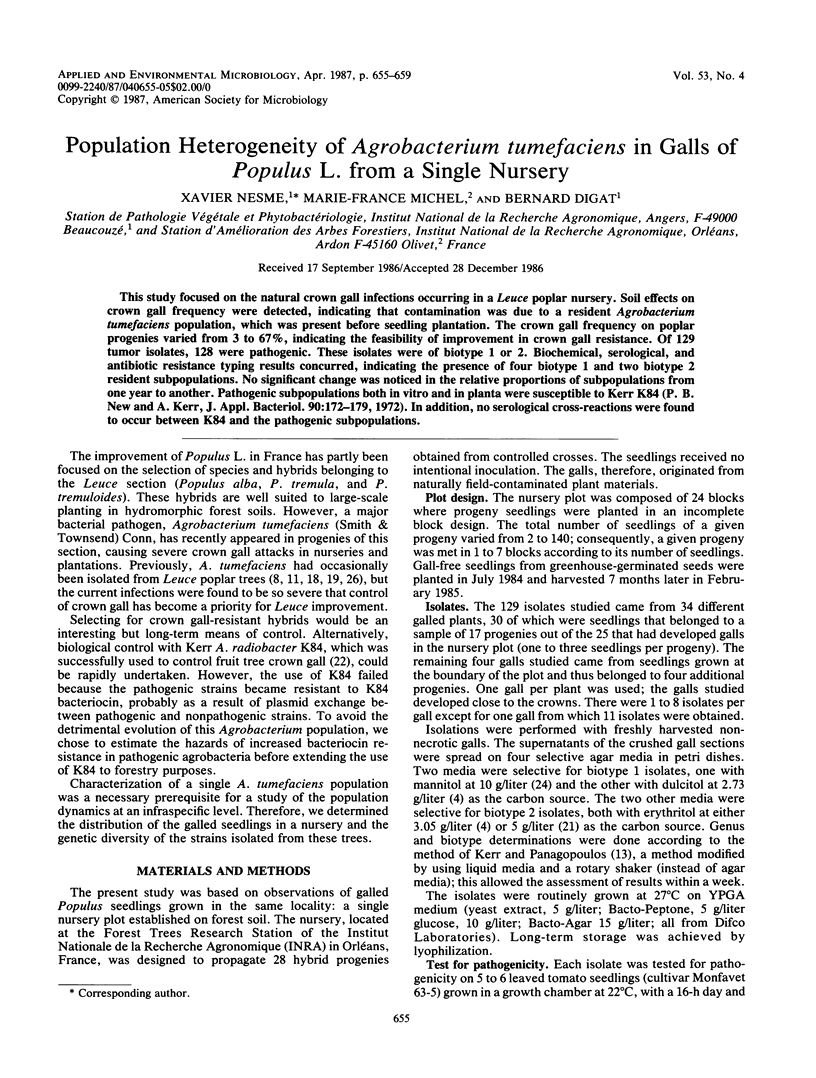
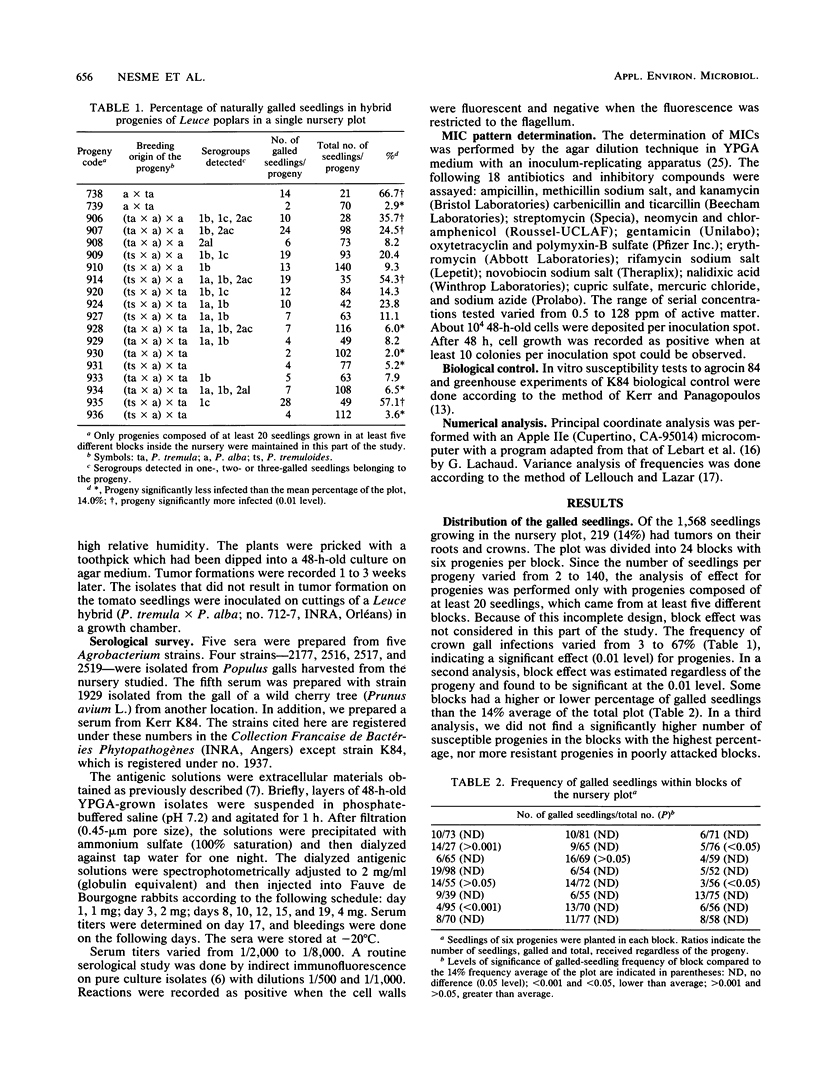
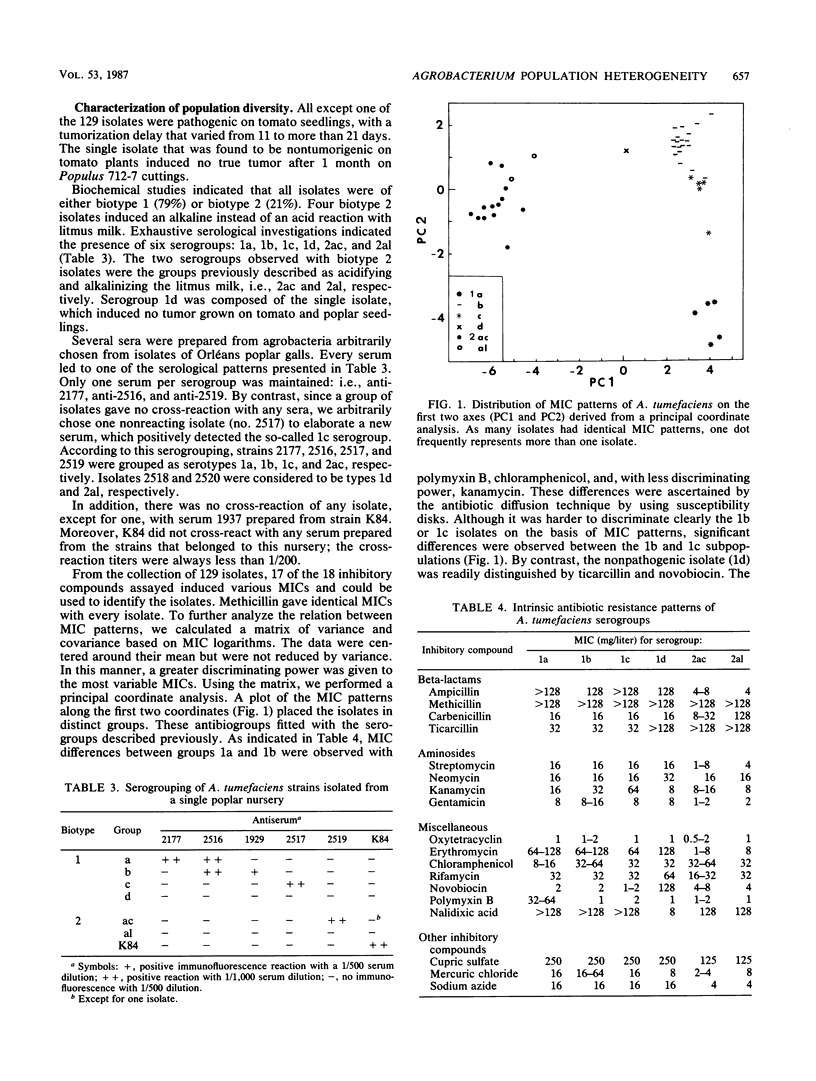
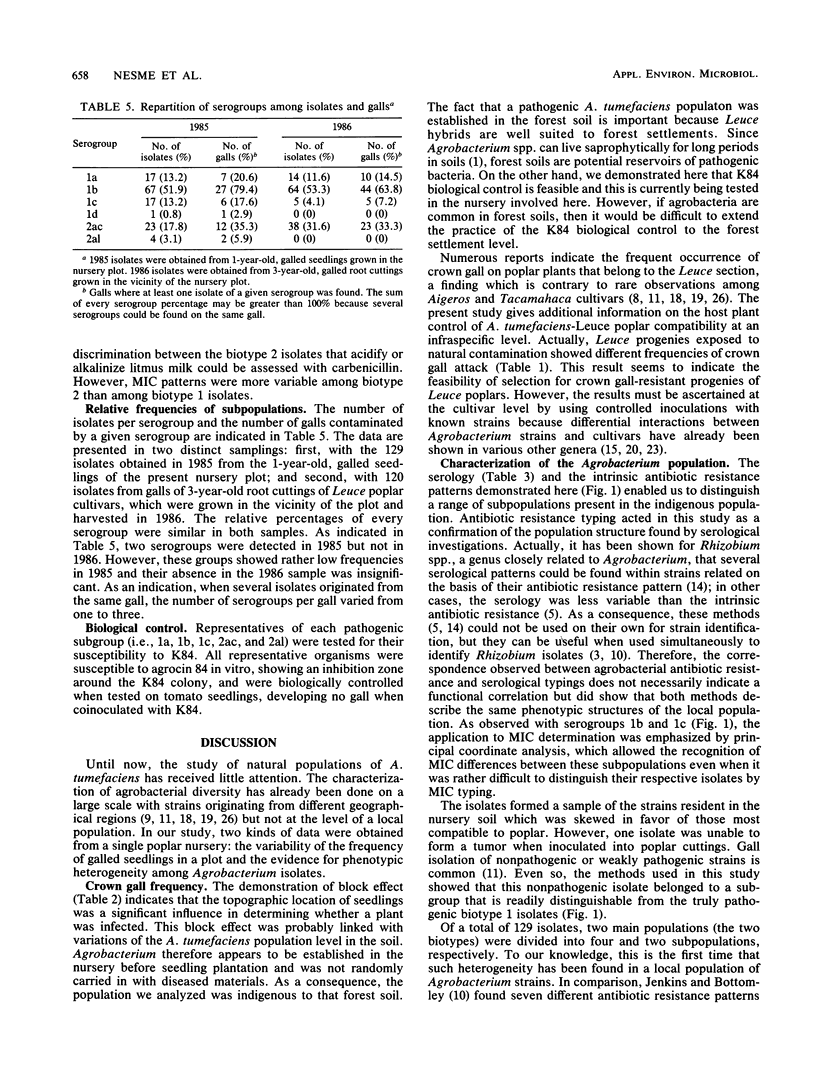
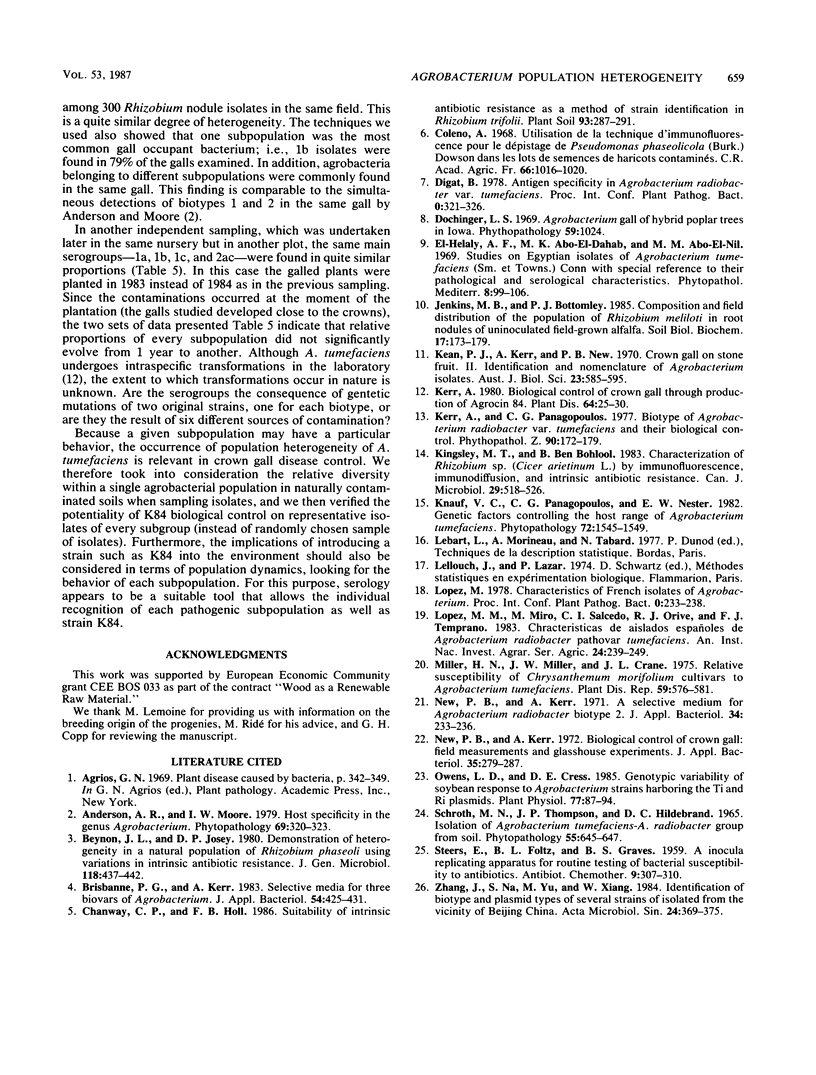
Selected References
These references are in PubMed. This may not be the complete list of references from this article.
- New P. B., Kerr A. A selective medium for Agrobacterium radiobacter biotype 2. J Appl Bacteriol. 1971 Mar;34(1):233–236. doi: 10.1111/j.1365-2672.1971.tb02281.x. [DOI] [PubMed] [Google Scholar]
- Owens L. D., Cress D. E. Genotypic variability of soybean response to agrobacterium strains harboring the ti or ri plasmids. Plant Physiol. 1985 Jan;77(1):87–94. doi: 10.1104/pp.77.1.87. [DOI] [PMC free article] [PubMed] [Google Scholar]


